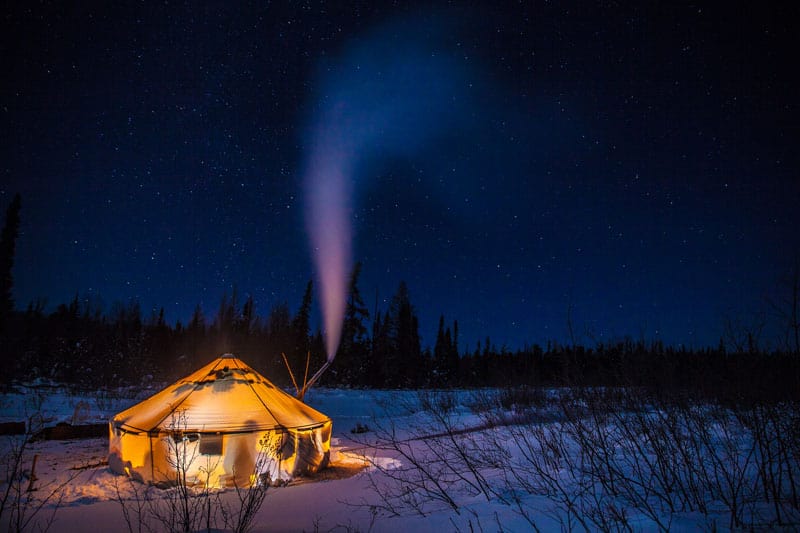Overview of Winter Trekking Experience
Winter Expedition in Northern Canada
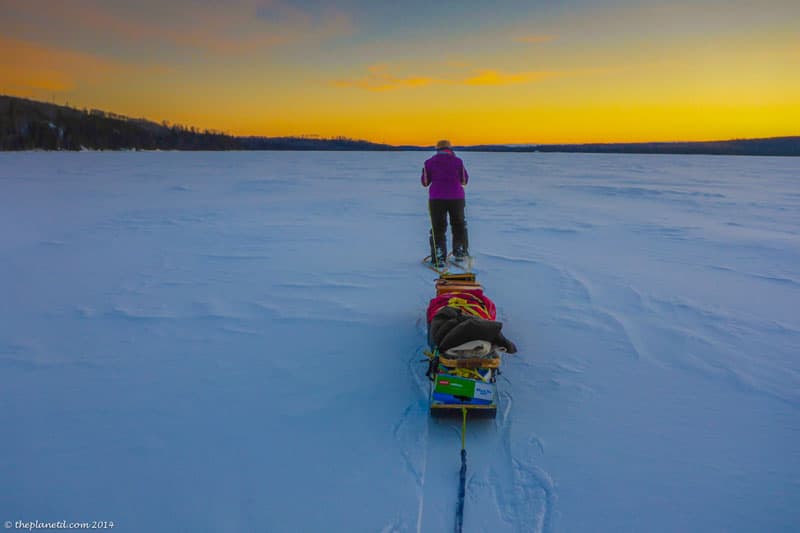
Winter trekking is no ordinary experience. It involves hours of snowshoeing across frozen terrains, and once you arrive at your camp, the real work begins. After trekking for eight hours across snow-covered rivers, lakes, and historic trails, setting up camp consumes three more hours of your day.
Your extreme vacation with Lure of the North will test your limits.
The co-owner, Kielyn Marrone, showcased her survival skills by being a top finalist on Alone Season 7, spending 80 days alone in the Arctic.
During our 10-day journey in the Arctic Watershed, we faced temperatures dropping to -30°F. It may sound daunting, but as we always assert, if we can manage, you can too!
Traditional Winter Trekking – 8 Hour Days
7:30 am to 3:30 pm – Endless Trekking
Our daily trek lasted 8 hours, covering a distance of approximately 10 km, while pulling heavy sleds and navigating various obstacles. This arduous journey was both challenging and rewarding.
Portages
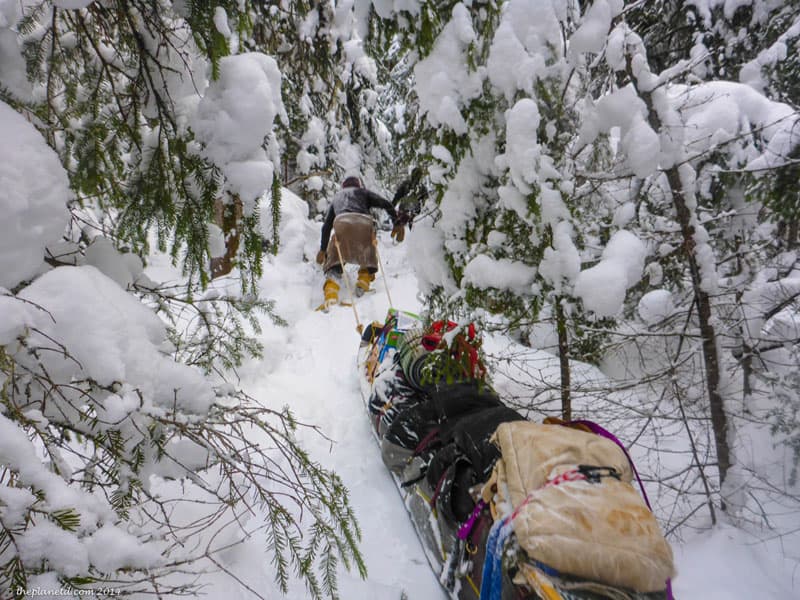
One critical aspect of our journey involved portages, which connect bodies of water through land. Portaging begins with tackling steep hills, sometimes requiring ropes to hoist sleds. We would alternate roles—someone would pack the snow and clear fallen trees while others transported the sleds.
Although portaging was slow and strenuous—averaging 1 km per hour—the satisfaction upon completion was immensely fulfilling.
Deep Snow
Daily, we faced the challenge of breaking through deep snow. Sometimes this was easier, especially on windswept lakes, but more often than not, we trudged through knee-deep snow, testing our resolve.
Thin Ice
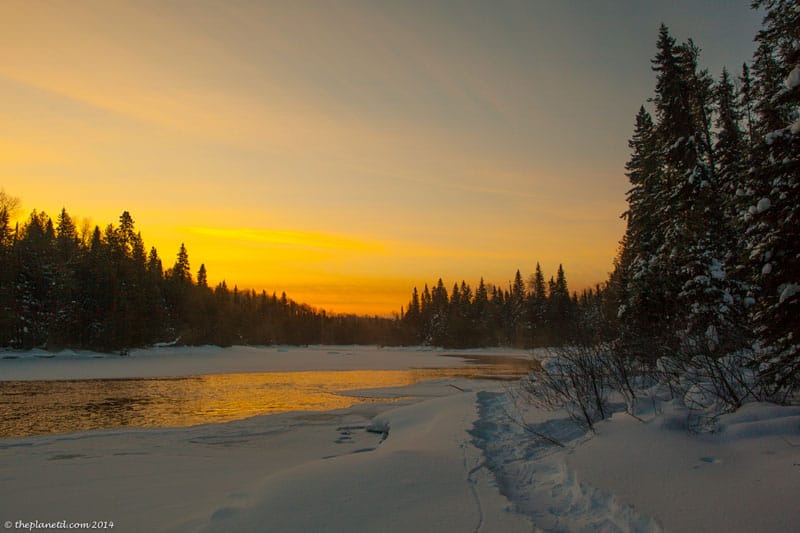
Throughout our trek, we had to remain vigilant about thin ice, especially in narrow parts of lakes and rivers. Our guides, Kielyn and Dave, skillfully checked the ice’s safety by tapping with their poles. During our journey, we encountered several incidences of ice breakage, stressing the importance of caution.
Slush

A significant hazard we encountered was slush, formed by the accumulation of snow on top of ice. It often caught us by surprise, slowing our pace considerably. Clearing slush from boots and sleds became an everyday challenge that tested our endurance.
Breaks
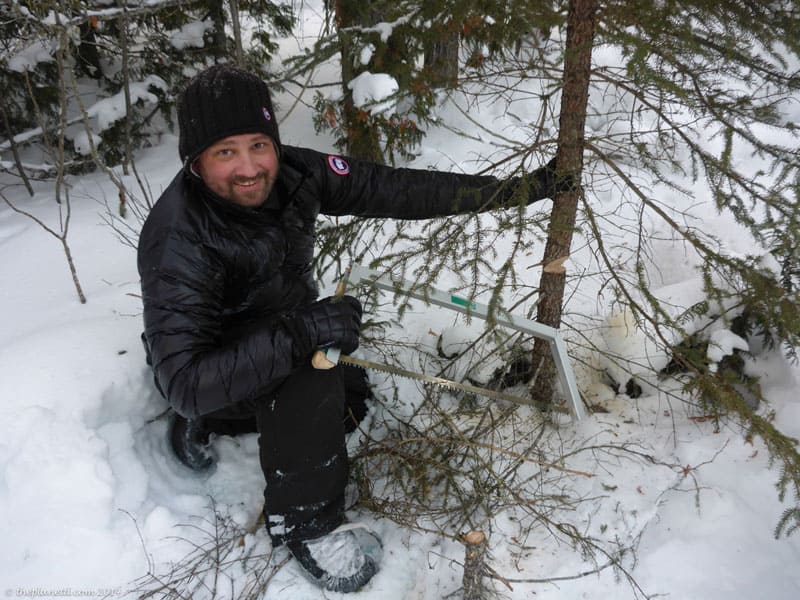
We took 2 to 3 breaks daily, utilizing sheltered spots to warm up and enjoy our meals. Our guide, Kielyn, provided us with hearty lunches, including warm sandwiches, soups, nuts, and other treats.
Camp Set Up – 3 Hours
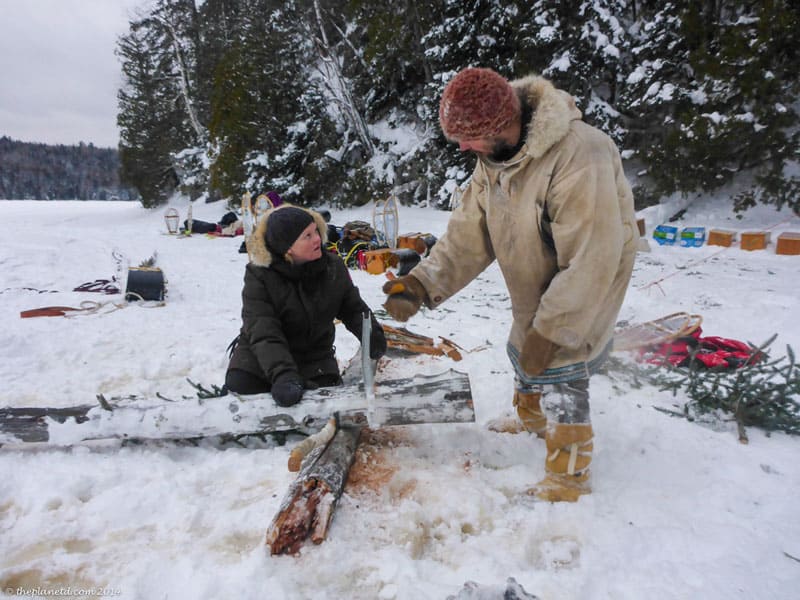
Setting up camp began with flattening the snow around our tent site to make our evening more comfortable. Six out of our seven-member team worked together to erect the canvas tent, while our guide set out to gather firewood.
An essential part of camp setup was securing firewood, using clay and stones to anchor our wood stove, ensuring it would not melt into the lake overnight.
Fetching Water in Winter from Ice Lake
We obtained our water by chiseling through ice—a task that required considerable effort but was crucial for cooking and hydration. We remained mindful of snow for cooking if the lakes were inaccessible.
Throughout the expedition, the preparation for weather challenges was vital, contributing significantly to our comfort.
Winter Trekking Tips
Winter is cold, but that doesn’t mean it can’t be comfortable.
Equip yourself with the right gear and knowledge to ensure a safe and enjoyable winter trekking experience. Here are several key tips for winter trekking efficiency:
Layering Tips
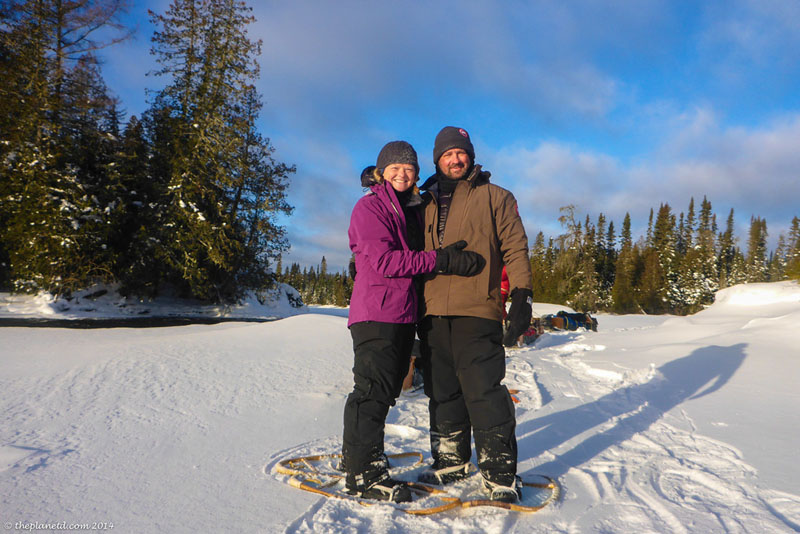
Understanding how to layer effectively is crucial. Staying warm in winter requires the right balance of insulation and breathability. Strip down to prevent overheating during vigorous activities.
Hot Tip: The easiest way to cool yourself down quickly is to remove your hat.
Base Layer
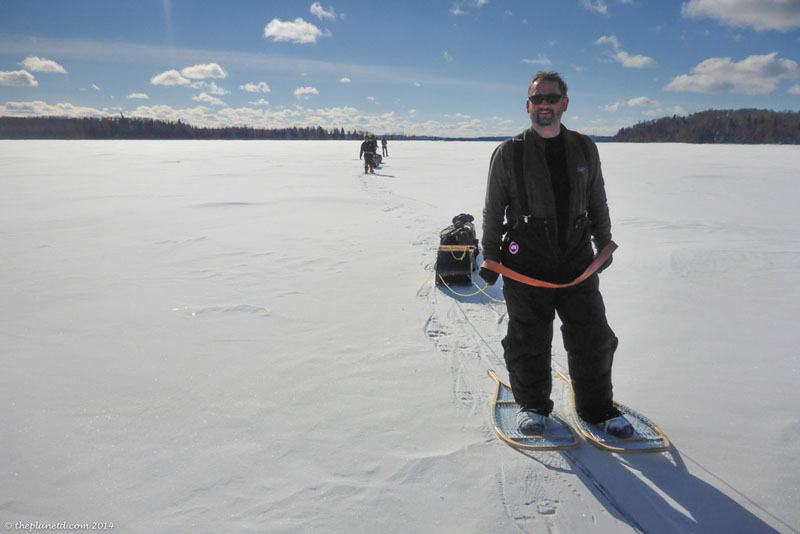
Merino wool base layers are highly recommended for their moisture-wicking properties and odor resistance. We relied on these layers during our expedition.
Mid Layers
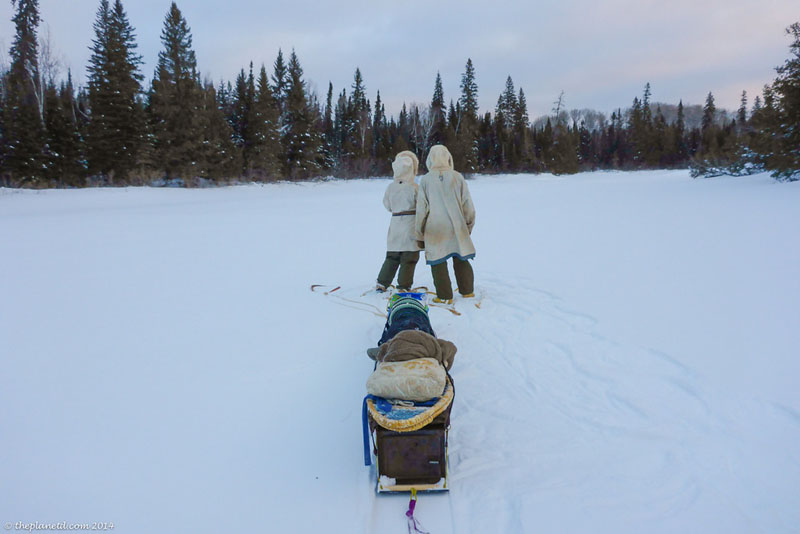
Fleece or wool sweaters serve as excellent mid-layers for insulation. Insulated pants also played a key role in our comfort level throughout the day.
Outer Layer
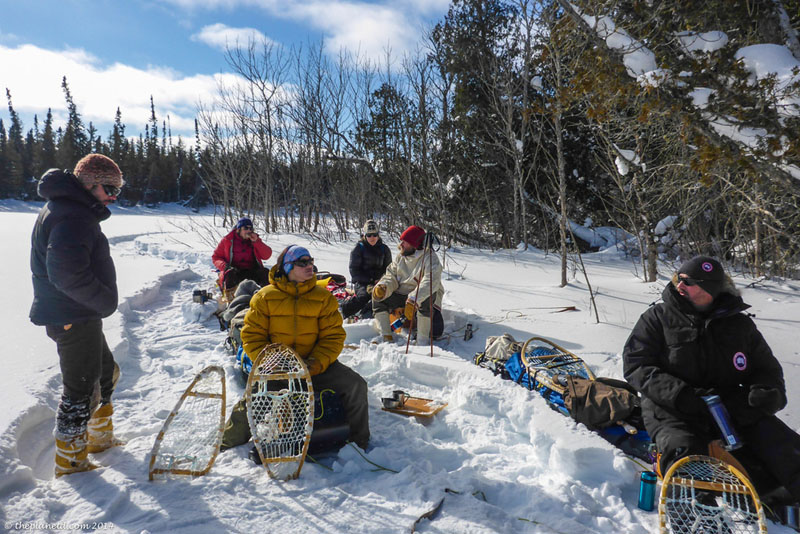
A windproof jacket is essential for protection against cold winds and moisture. Having a breathable outer layer ensures warmth without trapping sweat within.
Face Coverings
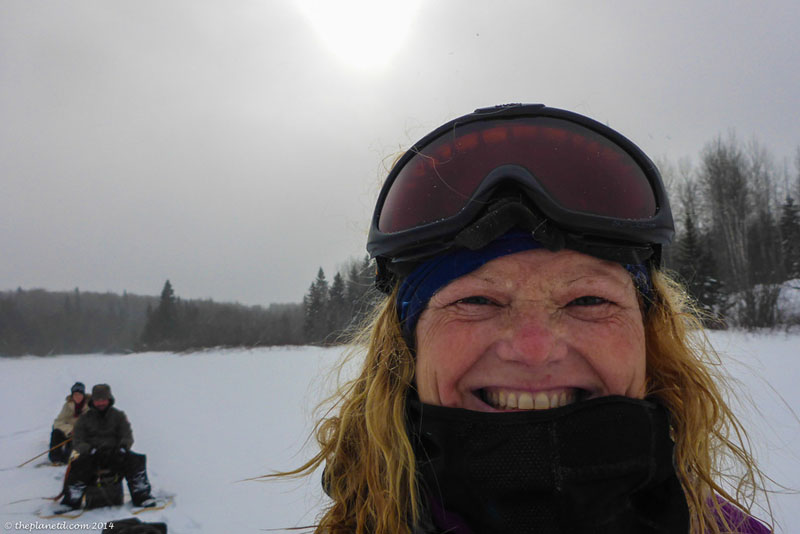
Keeping your face covered is essential in extreme cold. We utilized breathable masks and buffs to stay warm while hiking.
Footwear
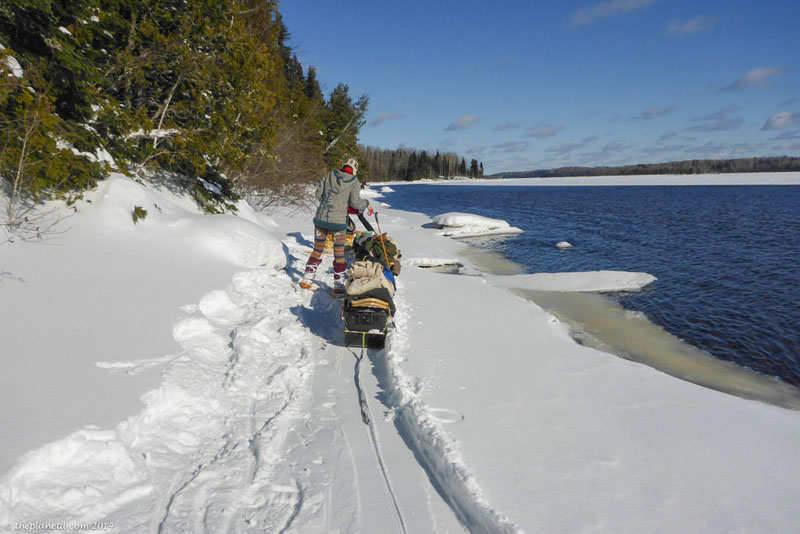
Choosing the right footwear is essential to prevent cold feet. Our preference for wearing layered socks and moccasins helped maintain warmth, as did additional waterproof outer boots during wet conditions.
Safety in Numbers
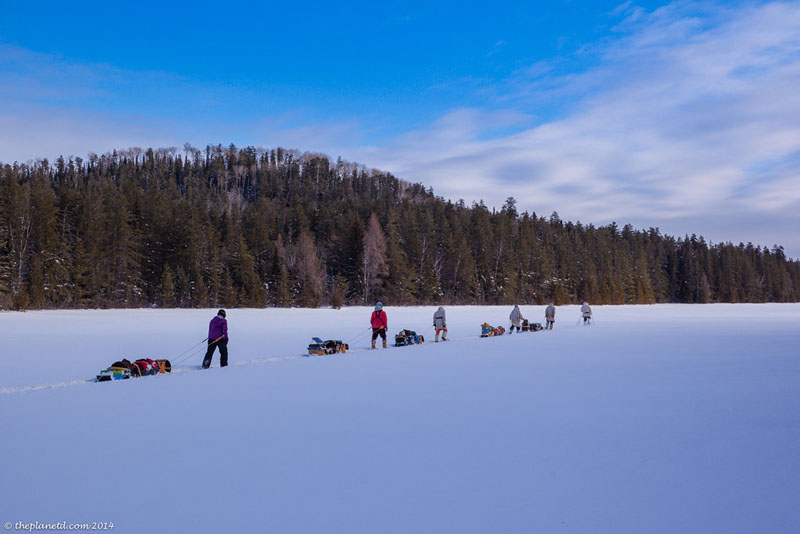
Lastly, never trek alone. Having an experienced guide or a group makes it safer and more enjoyable while allowing for shared responsibilities and support.
Would you embrace the challenges of a winter expedition after understanding a day in the life of traditional winter trekking?
